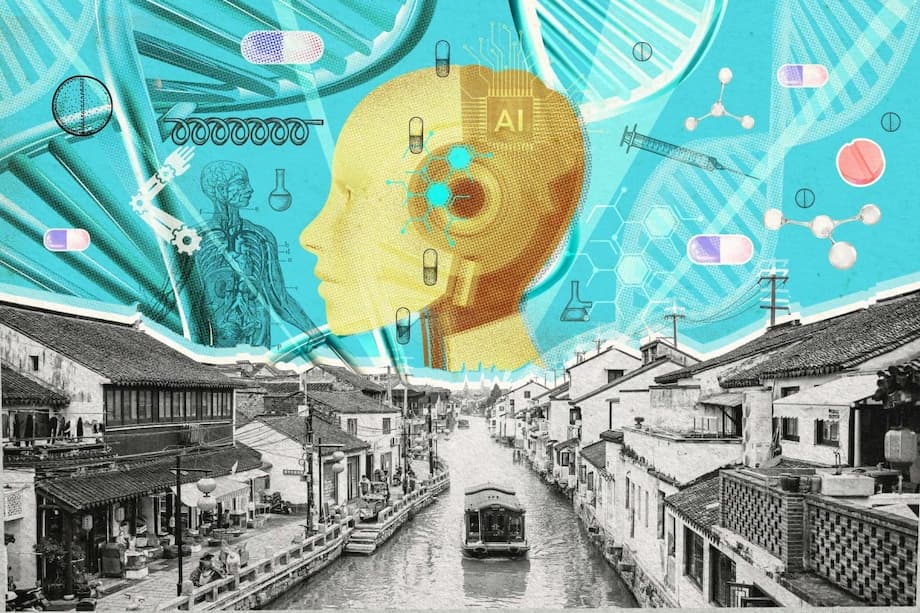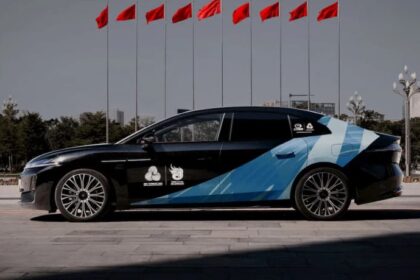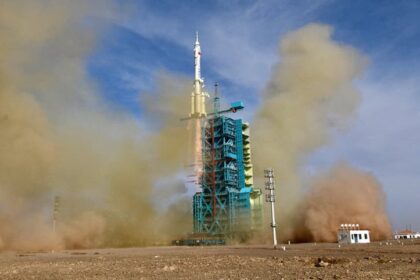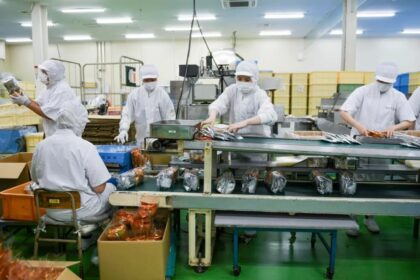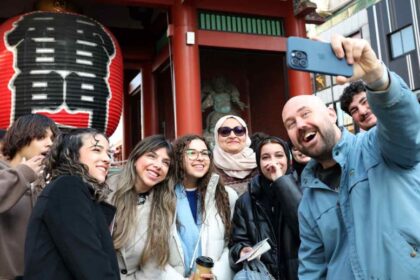Can Suzhou Transform from Ancient Garden City to Biotech Powerhouse?
Suzhou, a city long celebrated for its classical gardens and winding canals, is now making headlines for a very different reason: its audacious ambition to become China’s answer to Boston—the world’s leading biotechnology hub. In just over a decade, Suzhou has rapidly evolved from a picturesque tourist destination into a thriving center for biopharmaceutical innovation, aiming to host more than 10,000 biotech companies and generate over 1 trillion yuan (about US$139 billion) in output value by 2030.
- Can Suzhou Transform from Ancient Garden City to Biotech Powerhouse?
- How Did Suzhou’s Biotech Revolution Begin?
- What Makes Suzhou’s Biotech Ecosystem Unique?
- What Are Suzhou’s Most Notable Biotech Achievements?
- How Does Suzhou Compare to Other Biotech Hubs?
- What Challenges and Opportunities Lie Ahead?
- What Does the Future Hold for Suzhou’s Biotech Dream?
- In Summary
This transformation is not just a local dream. It is a key part of China’s broader national strategy to move up the value chain in science and technology, reduce reliance on foreign innovation, and become a global leader in life sciences. But can Suzhou, with its unique blend of history and high-tech ambition, truly rival established biotech giants like Boston, Shanghai, and Beijing?
How Did Suzhou’s Biotech Revolution Begin?
The roots of Suzhou’s biotech boom can be traced back to the establishment of the China-Singapore Suzhou Industrial Park (SIP) in 1994. Conceived as a joint venture between the Chinese and Singaporean governments, SIP was designed to showcase modern urban planning and economic development, drawing on Singapore’s expertise. Despite early challenges, including management disputes and financial setbacks, the park rebounded by offering incentives and attracting major multinational corporations.
Today, SIP covers 278 square kilometers and is home to over 800,000 residents. It has become a magnet for high-tech industries, including information technology, nanotechnology, artificial intelligence, and—most notably—biomedicine. The park’s success has inspired similar projects across China and internationally, serving as a model for urban innovation and industrial clustering.
Within SIP, the creation of BioBAY in the early 2000s marked a turning point for Suzhou’s biotech ambitions. BioBAY is a dedicated biomedical cluster that now hosts over 430 companies and employs nearly 15,000 professionals. It provides state-of-the-art laboratories, incubators, and support services for startups and established firms alike, fostering a vibrant ecosystem for research, development, and commercialization.
Government Support and Ambitious Targets
Suzhou’s local government has played a pivotal role in nurturing the biotech sector. In 2020, at the Suzhou Biomedical Industry Development Conference, then Communist Party chief Lan Shaomin declared:
“We are the first in China to benchmark ourselves against the global biotechnology hub of Boston… aiming to establish biomedicine as a lasting industrial landmark in Suzhou.”
To attract top local and international pharmaceutical firms, Suzhou offers generous subsidies—up to 60 million yuan (US$8.3 million) per company—to set up regional headquarters in the city. The goal is clear: by 2030, Suzhou aims to host more than 10,000 biopharmaceutical companies and achieve an output value exceeding 1 trillion yuan.
What Makes Suzhou’s Biotech Ecosystem Unique?
Suzhou’s rise as a biotech hub is not just about numbers. It is about building a comprehensive ecosystem that integrates research, industry, education, and global collaboration. Several factors set Suzhou apart from other Chinese cities vying for biotech dominance:
- Strategic Location: Situated in the Yangtze River Delta, Suzhou benefits from proximity to Shanghai and access to a vast talent pool and supply chain network.
- World-Class Infrastructure: The Suzhou Industrial Park and BioBAY offer cutting-edge facilities, shared labs, GMP-compliant production spaces, and access to venture capital.
- Academic-Industry Collaboration: Institutions like Xi’an Jiaotong-Liverpool University (XJTLU) have established specialized academies, such as the Wisdom Lake Academy of Pharmacy, to train the next generation of biotech leaders and foster industry partnerships.
- Policy and Regulatory Support: Local and national governments provide subsidies, fast-track approvals, and ecosystem programs to encourage innovation and attract foreign investment.
These elements combine to create a dynamic environment where startups, multinational corporations, and academic researchers can collaborate and compete on a global stage.
BioBAY: The Heart of Suzhou’s Biotech Cluster
BioBAY serves as the nerve center of Suzhou’s biotech ambitions. It offers a full spectrum of support for companies at every stage of development, from incubation to commercialization. Notable residents include Innovent Biologics, CStone Pharmaceuticals, BeiGene, Gracell Biotechnologies, and Basecare Medical. These firms are not only advancing cutting-edge therapies but also attracting significant international investment and licensing deals.
BioBAY’s success has been fueled by its ability to provide shared resources, foster networking, and facilitate partnerships between startups, established firms, and academic institutions. The cluster’s proximity to XJTLU and other research centers ensures a steady pipeline of talent and innovation.
Academic Powerhouse: XJTLU and the Wisdom Lake Academy of Pharmacy
Recognizing the importance of talent cultivation, Suzhou has invested heavily in higher education and research. XJTLU, a joint venture between Xi’an Jiaotong University and the University of Liverpool, has established the Wisdom Lake Academy of Pharmacy to pioneer a new model of interdisciplinary education closely integrated with industry.
The Academy collaborates with leading biotech companies, offers internships and research opportunities, and focuses on multidisciplinary research areas such as artificial intelligence and deep learning for pharmaceutical development. This approach mirrors the successful model seen in Boston’s Kendall Square, where academia and industry work hand-in-hand to drive innovation.
The Industrial Development Advisory Board at the Academy includes senior representatives from major companies like Agilent Technologies, AstraZeneca, BeiGene, and Innovent Biologics, ensuring that academic programs align with industry needs and global trends.
What Are Suzhou’s Most Notable Biotech Achievements?
Suzhou’s biotech sector has already produced several landmark achievements that underscore its growing influence:
- Innovent Biologics: This Suzhou-based company recently secured approval for mazdutide, China’s first locally developed weight loss drug. This breakthrough challenges global giants like Novo Nordisk and Eli Lilly, offering a homegrown alternative for China’s rapidly growing obesity and diabetes market.
- COVID-19 Vaccine Innovation: Firms such as Abogen Biosciences and Advaccine Biopharmaceuticals, both based in Suzhou, have developed China’s first mRNA and DNA-based COVID-19 vaccines, demonstrating the city’s capacity for cutting-edge research and rapid response to global health challenges.
- Pipeline of Innovative Drugs: Suzhou companies are developing a wide range of novel therapies, from GLP-1 pills for weight loss to advanced treatments for cancer and autoimmune diseases. Many of these drugs are being licensed to international partners for further development and commercialization.
These successes have not gone unnoticed. Analysts estimate that China’s weight loss drug market alone could grow to between US$5.6 billion and US$11.4 billion a year, with Suzhou-based firms poised to capture a significant share.
Hosting Major Industry Events: BIOCHINA and Beyond
Suzhou’s role as a biotech hub is further cemented by its hosting of major industry events. BIOCHINA, the country’s largest bio convention, recently drew nearly 28,000 registrants and 480 exhibitors from around the world. The event showcased advancements in drug licensing, supply chain optimization, and funding access, while providing a platform for business meetings and international collaboration.
The upcoming BIOCHINA 2025 is expected to attract over 3,000 biotech companies, covering key areas such as cell and gene therapy, antibody drugs, vaccines, and nucleic acid drugs. These conventions not only highlight Suzhou’s growing influence but also foster the partnerships and knowledge exchange essential for sustained innovation.
How Does Suzhou Compare to Other Biotech Hubs?
While Suzhou’s progress is impressive, it faces stiff competition from established biotech centers in China and abroad. Beijing, Shanghai, and Shenzhen have long been recognized as leaders in life sciences, boasting extensive research infrastructure, access to capital, and strong government support.
Globally, Boston remains the gold standard, with its dense concentration of world-class universities, research hospitals, venture capital, and a culture of entrepreneurship. Suzhou’s strategy is to benchmark itself directly against Boston, aiming to replicate its ecosystem of academia-industry collaboration, talent cultivation, and commercialization expertise.
According to the Information Technology and Innovation Foundation (ITIF), China’s share of global value-added pharmaceuticals output rose from 5.6% in 2002 to 24.2% in 2019. However, China still trails the United States in turning scientific discoveries into commercial products, due in part to differences in funding, intellectual property protection, and venture capital ecosystems.
International Collaboration and Investment
To bridge these gaps, Suzhou is actively courting international partners. Bayer Co.Lab, for example, has established a site in China to support local biotech startups in cell and gene therapy, oncology, and new technology platforms. Startups like Epigenic Therapeutics and Immunocan Biotech are leveraging Bayer’s global network to accelerate innovation and access international markets.
Such collaborations not only bring in expertise and resources but also help Suzhou’s companies meet global standards in research, development, and regulatory compliance.
What Challenges and Opportunities Lie Ahead?
Suzhou’s biotech sector is riding a wave of optimism, but several challenges remain:
- Commercialization Gap: While China has made great strides in research and development, turning scientific breakthroughs into market-ready products remains a challenge. The U.S. still leads in this area, thanks to a mature ecosystem of venture capital, intellectual property protection, and commercialization expertise.
- Regulatory and Quality Concerns: Chinese biotech firms are working to overcome past quality issues and skepticism among doctors and patients. Ensuring that new drugs meet international standards is critical for global competitiveness.
- Talent Competition: As more cities vie for biotech leadership, attracting and retaining top talent becomes increasingly difficult. Suzhou’s investment in education and industry partnerships is a step in the right direction, but ongoing efforts are needed to stay ahead.
- Infrastructure and Real Estate: The rapid growth of the biotech sector has driven demand for specialized facilities, such as GMP-certified labs and modular production spaces. Real estate developers are responding by offering flexible leasing and high-specification labs, but competition for prime locations remains fierce.
On the opportunity side, Suzhou is well-positioned to capitalize on emerging trends:
- AI and Digital Health: The integration of artificial intelligence and digital technologies into drug discovery, diagnostics, and personalized medicine is a major focus for Suzhou’s research institutions and startups.
- Advanced Therapeutics: Areas such as cell and gene therapy, brain-computer interfaces, and precision medicine offer significant growth potential, with strong government backing and international interest.
- Green and Sustainable Development: As environmental standards tighten, biotech companies are investing in sustainable production methods and green-certified facilities, aligning with global trends and regulatory requirements.
What Does the Future Hold for Suzhou’s Biotech Dream?
Suzhou’s transformation from an ancient garden city to a modern biotech powerhouse is a testament to the power of vision, collaboration, and strategic investment. The city’s integrated approach—combining government support, world-class infrastructure, academic-industry partnerships, and international collaboration—has created a fertile ground for innovation and growth.
As China’s population ages and demand for advanced healthcare solutions rises, Suzhou is poised to play a central role in shaping the future of medicine, both at home and abroad. The city’s ability to attract top talent, foster global partnerships, and commercialize cutting-edge therapies will determine whether it can truly rival the likes of Boston and become a lasting landmark in the world of biotechnology.
For now, Suzhou’s bold bid is capturing the attention of investors, researchers, and policymakers worldwide. Its journey offers valuable lessons for other cities seeking to build innovation-driven economies and underscores the importance of vision, perseverance, and collaboration in the pursuit of scientific progress.
In Summary
- Suzhou is rapidly emerging as a major biotech hub, aiming to host over 10,000 companies and generate 1 trillion yuan in output by 2030.
- The city’s success is built on the foundation of the China-Singapore Suzhou Industrial Park and the BioBAY biomedical cluster.
- Strong government support, academic-industry collaboration, and world-class infrastructure are key drivers of Suzhou’s biotech boom.
- Notable achievements include the approval of China’s first local weight loss drug and the development of innovative COVID-19 vaccines.
- Suzhou faces challenges in commercialization, regulatory compliance, and talent competition but is well-positioned to capitalize on trends like AI, advanced therapeutics, and sustainable development.
- International collaboration and major industry events like BIOCHINA are helping Suzhou connect with global partners and accelerate innovation.
- The city’s journey from ancient gardens to biotech powerhouse offers a blueprint for innovation-driven urban transformation in China and beyond.


